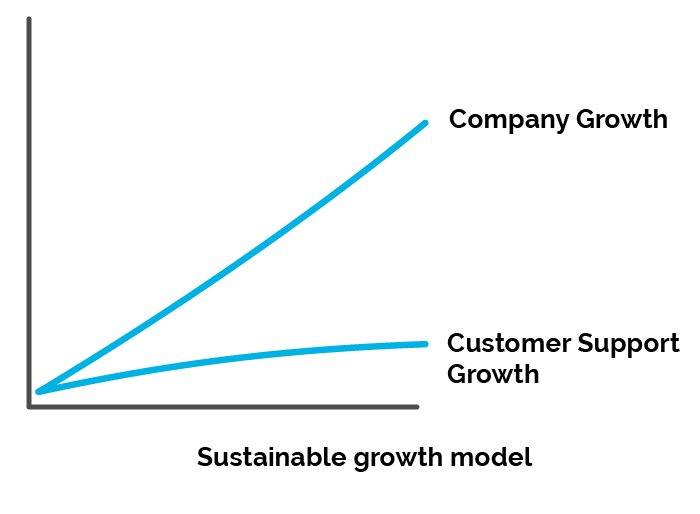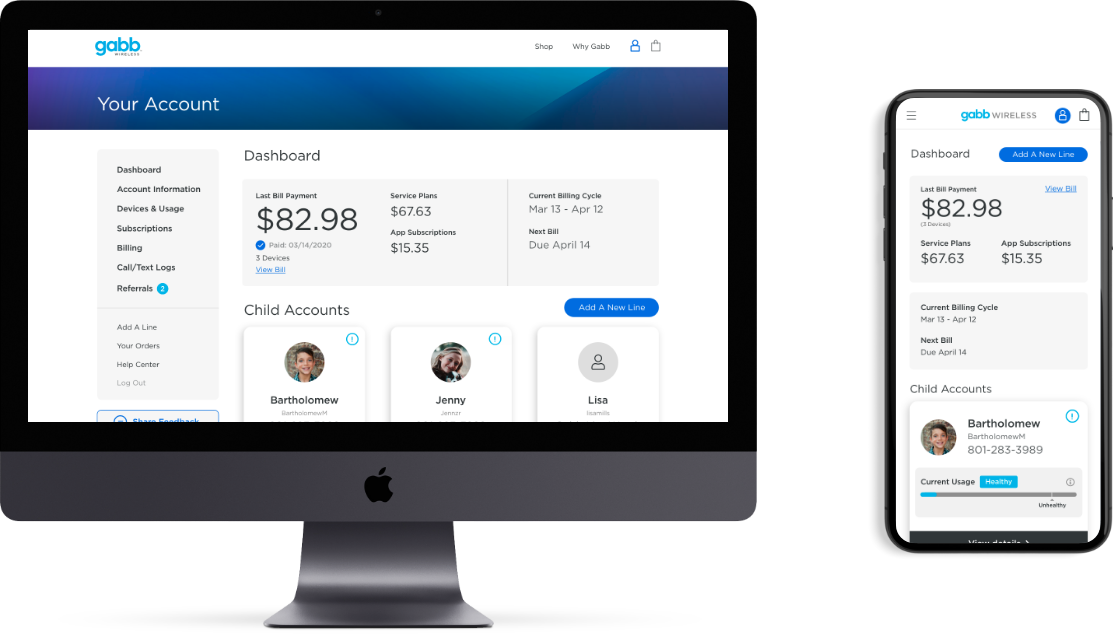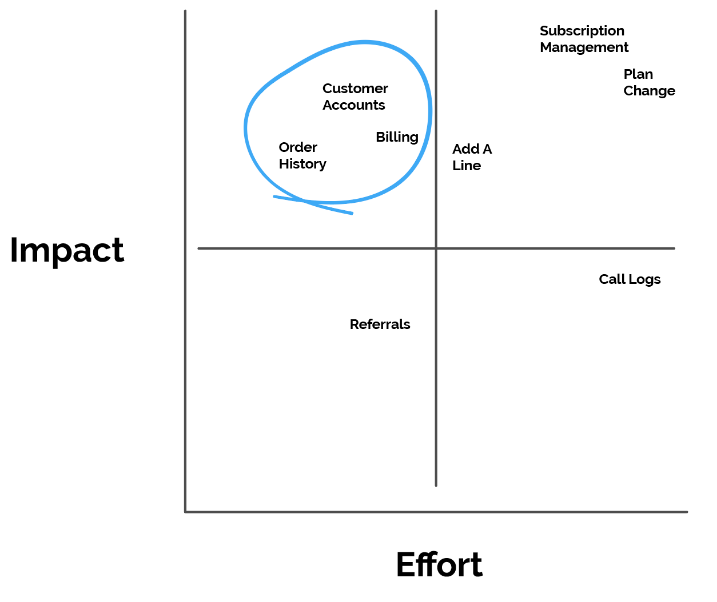
What is Gabb Wireless?
Gabb wireless is a mobile service provider that creates safe kids smartphones with no internet access, social media, or games. This enables you to contact your child without worrying about them being exposed to the negative effects of other smartphones.
Where I came in
I joined Gabb wireless in 2020. I was first product design hire in a company that only understood marketing and engineering. This meant there was a huge paradigm shift I had to instill into the marketing and engineering heavy culture.
My first task? Establish an expectation of value that product & design thinking could provide. Here’s how I did it.
First, understand the companies growth situation
I conducted extensive interviews with various members of the company to identify areas that were bottlenecking our revenue. I learned that the company had put so many resources into sales and marketing that they didn’t realize how this would impact their ability to handle the customer base.
Business needs I discovered:
- Enable the ability to support multiple types of products.
- Create system to provide digital subscription.
- Decrease overhead costs.
I then got to know the customers and the problems they were facing.
Research plan:
- Shadow real customer support calls
- Interview customers
- Consolidate bug logs
- Aggregate customer support tickets
- Perform cost analysis for support ticket types
- Competitive analysis
”“Listening to actual customer support calls helped me get up close to the issues customers were experiencing.”
Where was the correlation between customer and business needs?
Lack of infrastructure
The company had poorly built infrastructure that was largely controlled by 3rd party companies and very old. This meant that adding new features or products was almost impossible and even small changes were expensive.
Unsustainable growth
The lack of infrastructure meant any time a customer had a problem, they had to contact a support agent and have it manually resolved. This was even for the simplest tasks such as finding order information which was costing the company a lot.


Finding solutions
Working in collaboration with the VP of product and Director of customer support, we determined that we determined on the items below as the best approach for solving the issues.
1. Rebuild the customer account portal in-house
The customer account portal was incredibly difficult for customers to use. We had just gone through a rebrand, but that part of the website hadn’t been changed at all. Without going into too many details we determined the items below should be the focus.
- Billing-related
- Asking about orders
- Asking to upgrade/downgrade a phone plan
- Support unlocking MMS on kids’ phones
- Understanding their bill
- Complaining about the MyGabb app
- Feature Requests
I walked the team through creating an impact/effort diagram with everything we needed to change to determine what we focus on first and define an MVP.
These items accounted for 30% of all customer support tickets. By solving these and allowing customers to do these tasks themselves the goal was to lower the overall support ticket rate by 20%. It was a bit ambitious but I felt reasonable.
2. Updating the MyGabb app

In addition to the user accounts, there were also many customer requests and complaints about the MyGabb app. This is the primary app used by parents, to track their kids’ device GPS. This project was more related to improving scalability and I won’t go into that in this case study.
My role
I led the efforts for defining the problems & goals with this project and directing the design execution. I helped support research efforts, design, and ensure that the engineers, designers, and stakeholders were all on the same page during every step of the process.
Complications on the way
1. Rebuild the customer account portal in-house
One of the most difficult aspects of this project were how complicated it was and how long it took. The reason the original customer account portal has so many usability problems was that it was built with software that had existed for 15+ years. Our engineers had to get access many API’s and backend systems from our telecom provider in order to properly connect the entire system together.
I worked with the VP of engineering and made sure the designer and developers regularly met to discuss what changes could actually be made, how long it would take, and how each item would move the needle to meeting the ultimate goal.
Why not speed-to-market?
We had to pick our battles with this one and remember that the main goal was sustainable company growth. While changing the MyGabb app provided more opportunities for speed-to-market updates, the customer’s account portal was a bigger beast. Any effort we put in fixing small things would have been time intensive and have to be done by an often unwilling telecom provider. Going this route would not get us the movement we needed and ultimately only delay solving the root of the problem.
“Building the account portal in a way that allowed for easy and efficient pivots was key to adapting to the ever changing company needs.”
These items accounted for 30% of all customer support tickets. By solving these and allowing customers to do these tasks themselves the goal was to lower the overall support ticket rate by 20%. It was a bit ambitious but I felt reasonable.
Adjusting to new company initiatives mid-project
Going into the project, one of the things I made sure we clearly focused on was meeting the primary goal of unlocking sustainable growth but also accounting for scalability and having a good customer experience.
The company had the goal to eventually release other products and apps but their definition of that was pretty vague at the start of the project. While the redesign and building of the users account was in progress, the executive team made the decision to release our first subscription product with the launch of the new accounts. This meant we had to adjust our priorities to allow for customers to manage their subscriptions in the MVP.
Phase 1
Launch new MVP portal.
- Billing management
- Device/child accounts
- Order history
- Subscription management
These features were considered MVP because they had the lowest effort-to-impact ratio for lowering the customer support load and improving the customers overall experience.
Add more autonomy & scalability features
- Plan change
- Add A Line
- Device upgrades
Features that were heavier on the engineering side to complete, so we had to push them to the next phase to get the MVP launched in a reasonable amount of time. These also were next on the list for impact rating.
Phase 3…
Ongoing improvements
- Referral Program
- Calling/Texting Log History
- Child Account Enhancements
To further support the growth of the company, we chose to add in a more integral referral program and additional requested features by customers, that were more “Nice-to-haves”.



Design gallery
Far far away, behind the word mountains, far from the countries Vokalia and Consonantia, there live the blind texts. Separated they live in Bookmarksgrove right at the coast of the Semantics, a large language ocean. A small river named Duden flows by their place and supplies






